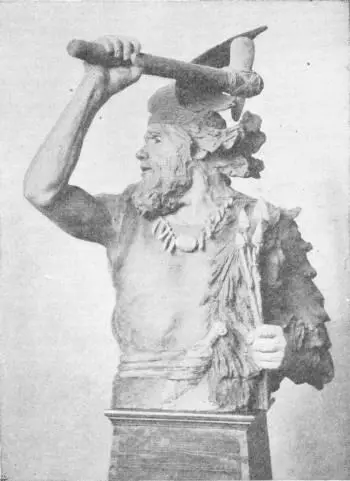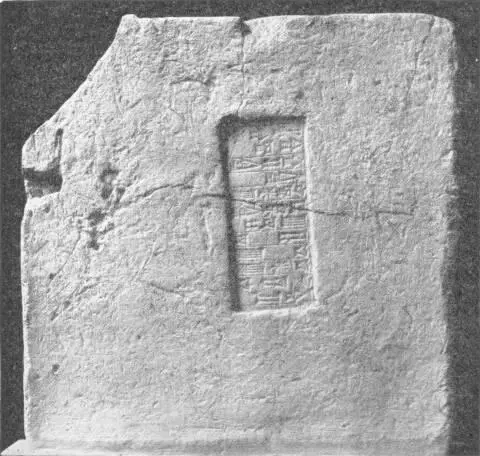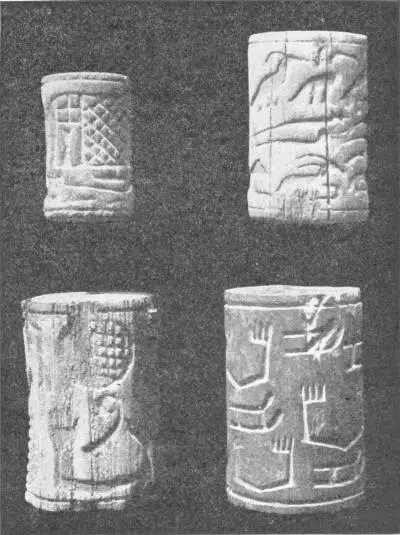Herbert Wells - A Short History of the World
Здесь есть возможность читать онлайн «Herbert Wells - A Short History of the World» весь текст электронной книги совершенно бесплатно (целиком полную версию без сокращений). В некоторых случаях можно слушать аудио, скачать через торрент в формате fb2 и присутствует краткое содержание. Год выпуска: 2011, Жанр: История, на английском языке. Описание произведения, (предисловие) а так же отзывы посетителей доступны на портале библиотеки ЛибКат.
- Название:A Short History of the World
- Автор:
- Жанр:
- Год:2011
- ISBN:нет данных
- Рейтинг книги:4 / 5. Голосов: 1
-
Избранное:Добавить в избранное
- Отзывы:
-
Ваша оценка:
- 80
- 1
- 2
- 3
- 4
- 5
A Short History of the World: краткое содержание, описание и аннотация
Предлагаем к чтению аннотацию, описание, краткое содержание или предисловие (зависит от того, что написал сам автор книги «A Short History of the World»). Если вы не нашли необходимую информацию о книге — напишите в комментариях, мы постараемся отыскать её.
A Short History of the World — читать онлайн бесплатно полную книгу (весь текст) целиком
Ниже представлен текст книги, разбитый по страницам. Система сохранения места последней прочитанной страницы, позволяет с удобством читать онлайн бесплатно книгу «A Short History of the World», без необходимости каждый раз заново искать на чём Вы остановились. Поставьте закладку, и сможете в любой момент перейти на страницу, на которой закончили чтение.
Интервал:
Закладка:
These priests carried astronomical science to a high level of accuracy. They knew their year better than the Babylonians of whom we shall presently tell. In Yucatan they had a kind of writing, the Maya writing, of the most curious and elaborate character. So far as we have been able to decipher it, it was used mainly for keeping the exact and complicated calendars upon which the priests expended their intelligence. The art of the Maya civilization came to a climax about 700 or 800 A.D. The sculptured work of these people amazes the modern observer by its great plastic power and its frequent beauty, and perplexes him by a grotesqueness and by a sort of insane conventionality and intricacy outside the circle of his ideas. There is nothing quite like it in the old world. The nearest approach, and that is a remote one, is found in archaic Indian carvings. Everywhere there are woven feathers and serpents twine in and out. Many Maya inscriptions resemble a certain sort of elaborate drawing made by lunatics in European asylums, more than any other old-world work. It is as if the Maya mind had developed upon a different line from the old-world mind, had a different twist to its ideas, was not, by old-world standards, a rational mind at all.
This linking of these aberrant American civilizations to the idea of a general mental aberration finds support in their extraordinary obsession by the shedding of human blood. The Mexican civilization in particular ran blood; it offered thousands of human victims yearly. The cutting open of living victims, the tearing out of the still beating heart, was an act that dominated the minds and lives of these strange priesthoods. The public life, the national festivities all turned on this fantastically horrible act.

NEOLITHIC WARRIOR
Modelled from drawing by Prof. Rutot
The ordinary existence of the common people in these communities was very like the ordinary existence of any other barbaric peasantry. Their pottery, weaving and dyeing was very good. The Maya writing was not only carven on stone but written and painted upon skins and the like. The European and American museums contain many enigmatical Maya manuscripts of which at present little has been deciphered except the dates. In Peru there were beginnings of a similar writing but they were superseded by a method of keeping records by knotting cords. A similar method of mnemonics was in use in China thousands of years ago.
In the old world before 4000 or 5000 B.C., that is to say three or four thousand years earlier, there were primitive civilizations not unlike these American civilizations; civilizations based upon a temple, having a vast quantity of blood sacrifices and with an intensely astronomical priesthood. But in the old world the primitive civilizations reacted upon one another and developed towards the conditions of our own world. In America these primitive civilizations never progressed beyond this primitive stage. Each of them was in a little world of its own. Mexico it seems knew little or nothing of Peru, until the Europeans came to America. The potato, which was the principal food stuff in Peru, was unknown in Mexico.
Age by age these peoples lived and marvelled at their gods and made their sacrifices and died. Maya art rose to high levels of decorative beauty. Men made love and tribes made war. Drought and plenty, pestilence and health, followed one another. The priests elaborated their calendar and their sacrificial ritual through long centuries, but made little progress in other directions.
XV
SUMERIA, EARLY EGYPT AND WRITING
THE old world is a wider, more varied stage than the new. By 6000 or 7000 B.C. there were already quasi-civilized communities almost at the Peruvian level, appearing in various fertile regions of Asia and in the Nile valley. At that time north Persia and western Turkestan and south Arabia were all more fertile than they are now, and there are traces of very early communities in these regions. It is in lower Mesopotamia however and in Egypt that there first appear cities, temples, systematic irrigation, and evidences of a social organization rising above the level of a mere barbaric village-town. In those days the Euphrates and Tigris flowed by separate mouths into the Persian Gulf, and it was in the country between them that the Sumerians built their first cities. About the same time, for chronology is still vague, the great history of Egypt was beginning.
These Sumerians appear to have been a brownish people with prominent noses. They employed a sort of writing that has been deciphered, and their language is now known. They had discovered the use of bronze and they built great tower-like temples of sun-dried brick. The clay of this country is very fine; they used it to write upon, and so it is that their inscriptions have been preserved to us. They had cattle, sheep, goats and asses, but no horses. They fought on foot, in close formation, carrying spears and shields of skin. Their clothing was of wool and they shaved their heads.
Each of the Sumerian cities seems generally to have been an independent state with a god of its own and priests of its own. But sometimes one city would establish an ascendancy over others and exact tribute from their population. A very ancient inscription at Nippur records the “empire,” the first recorded empire, of the Sumerian city of Erech. Its god and its priest-king claimed an authority from the Persian Gulf to the Red Sea.

BRICK OF HAMMURABI, KING OF BABYLON ABOUT 2200 B.C.
Note the cuneiform characters of the inscription, which records the building of a temple to a Sun God
At first writing was merely an abbreviated method of pictorial record. Even before Neolithic times men were beginning to write. The Azilian rock pictures to which we have already referred show the beginning of the process. Many of them record hunts and expeditions, and in most of these the human figures are plainly drawn. But in some the painter would not bother with head and limbs; he just indicated men by a vertical and one or two transverse strokes. From this to a conventional condensed picture writing was an easy transition. In Sumeria, where the writing was done on clay with a stick, the dabs of the characters soon became unrecognizably unlike the things they stood for, but in Egypt where men painted on walls and on strips of the papyrus reed (the first paper) the likeness to the thing imitated remained. From the fact that the wooden styles used in Sumeria made wedge-shaped marks, the Sumerian writing is called cuneiform (= wedge-shaped).

EBONY CYLINDER SEALS OF FIRST EGYPTIAN DYNASTY
Recovered from the Tombs at Abydos in 1921 by the British School of Archæology. They give evidence of early form of block printing
An important step towards writing was made when pictures were used to indicate not the thing represented but some similar thing. In the rebus dear to children of a suitable age, this is still done to-day. We draw a camp with tents and a bell, and the child is delighted to guess that this is the Scotch name Campbell. The Sumerian language was a language made up of accumulated syllables rather like some contemporary Amerindian languages, and it lent itself very readily to this syllabic method of writing words expressing ideas that could not be conveyed by pictures directly. Egyptian writing underwent parallel developments. Later on, when foreign peoples with less distinctly syllabled methods of speech were to learn and use these picture scripts they were to make those further modifications and simplifications that developed at last into alphabetical writing. All the true alphabets of the later world derived from a mixture of the Sumerian cuneiform and the Egyptian hieroglyphic (priest writing). Later in China there was to develop a conventionalized picture writing, but in China it never got to the alphabetical stage.
Читать дальшеИнтервал:
Закладка:
Похожие книги на «A Short History of the World»
Представляем Вашему вниманию похожие книги на «A Short History of the World» списком для выбора. Мы отобрали схожую по названию и смыслу литературу в надежде предоставить читателям больше вариантов отыскать новые, интересные, ещё непрочитанные произведения.
Обсуждение, отзывы о книге «A Short History of the World» и просто собственные мнения читателей. Оставьте ваши комментарии, напишите, что Вы думаете о произведении, его смысле или главных героях. Укажите что конкретно понравилось, а что нет, и почему Вы так считаете.








